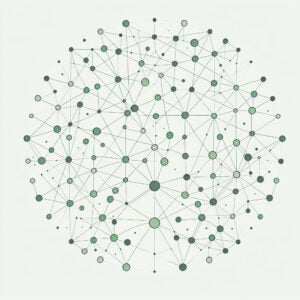 “Data-Driven Thinking” is written by members of the media community and contains fresh ideas on the digital revolution in media.
“Data-Driven Thinking” is written by members of the media community and contains fresh ideas on the digital revolution in media.
Today’s column is written by Lauren Moores, vice president of analytics at Dstillery.
Location metadata is revealing fresh insights about consumer behavior and giving marketers the ability to target a consumer by location context across channels. Using location in advertising allows marketers to create stronger audience insights through the combination of physical and digital data, as well as to tell better visual stories.
In parallel with the growth of location data in mobile, a proliferation of more user-friendly mapping technologies has emerged that allows brands to link data with location and then analyze that data visually. Among these tools are geographic information systems (GIS), which show information and insight that may have otherwise been hidden in a database or spreadsheet. Using geospatial technology allows marketers to understand what the audience is doing across different media and channels.
Let’s examine the new tools, and a few marketing use cases.
GIS Usage
In the past, you would have been exposed to a GIS mapping tool only if you were working for the government or distilling census data. However, the availability of location data has created opportunities for data science to use GIS in a number of fields. For instance, the technology is changing how research is done at educational institutions, allowing researchers to create visual interpretations of their work and pushing GIS classes to mainstream curriculum and concentrations. (Historian David Del Testa is working with GIS specialist Janine Glathar for his work on the colonial history of Vietnam.)
Marketing solution providers are also taking advantage of GIS mapping to help brands see what their audiences look like in context with location. These tools allow brands to create a visual picture of their most important customers and map brand actions. Marketers can use any opt-in location data — IP address, census blocks, lat/long, ZIP code — to understand their audiences. With this information, advertisers can move physical behavior to the digital world and create practical visualizations of where their customers go.
Location, GIS And Marketing
The complete customer journey is both physical and digital. I call it “phygital.” This is the new reality for consumers. It is not easy to marry physical and digital data, but when done skillfully, this merged data gives brands the ability to connect with audiences and look at the data in three dimensions.
Location data specifically enhances a marketer’s ability to provide audience segmentation, dynamic creative and cross-channel scale, as well as visualizations.
On a practical level, “here now,” “here once” and “here frequently” marketing approaches are often relevant and sometimes breakthrough means of targeting consumers. The “here now” approach allows an advertiser to find a consumer at the location that is most relevant for the advertiser. In addition to “here now” advertising, the ability to segment users by locations they visit frequently allows advertisers to reach and retarget consumers at work, home or play.
But we’re not only talking about location targeting. Using location information, which translates to the physical placement of consumers, extends beyond reaching consumers at a particular place.
Being aware of a consumer’s frequent locations allows marketers to turn a sparse mobile audience into rich audience profiles that can be enhanced by connecting first-party client data and third-party data via location information.
For example, marketers can use their first-party consumer loyalty and shopping data to create specific consumer location segments, which in turn can be used in mobile advertising, targeting specific locations to find new customers or retarget existing ones. In addition, a marketer can tie together local search and store visitation. Marrying location to census data can provide demographic, ethnographic and other census-related information. Other third-party data sets that can be tapped include voting districts and merchant locations.
Advanced enhancement includes the integration of contextual location information. Using location to map in third-party data offers ample enrichment by mapping location to other known information. For instance, base enhancement of location data includes mapping carrier information, region and metro codes to IP, latitude and longitude or ZIP code. If a consumer is frequently at airports on weekdays, marketers could bucket that consumer in a business traveler segment. By using physical visits, a marketer can understand its audience’s behavior and serve relevant digital advertising based on these real-world behaviors. The same is true for sports arenas, concert halls and shopping centers. Imagine being able to serve an online ad based on knowing that a customer visited a particular store at a particular time.
Advances in location data let marketers understand their audiences better. GIS technology helps marketers add a key visualization element. Combining the digital footprint of an audience with the physical footprint of that audience allows marketers to reach targets based on contextual location information and maximize this across channels and media.
Follow Lauren Moores (@lolomoo) and AdExchanger (@adexchanger) on Twitter.













